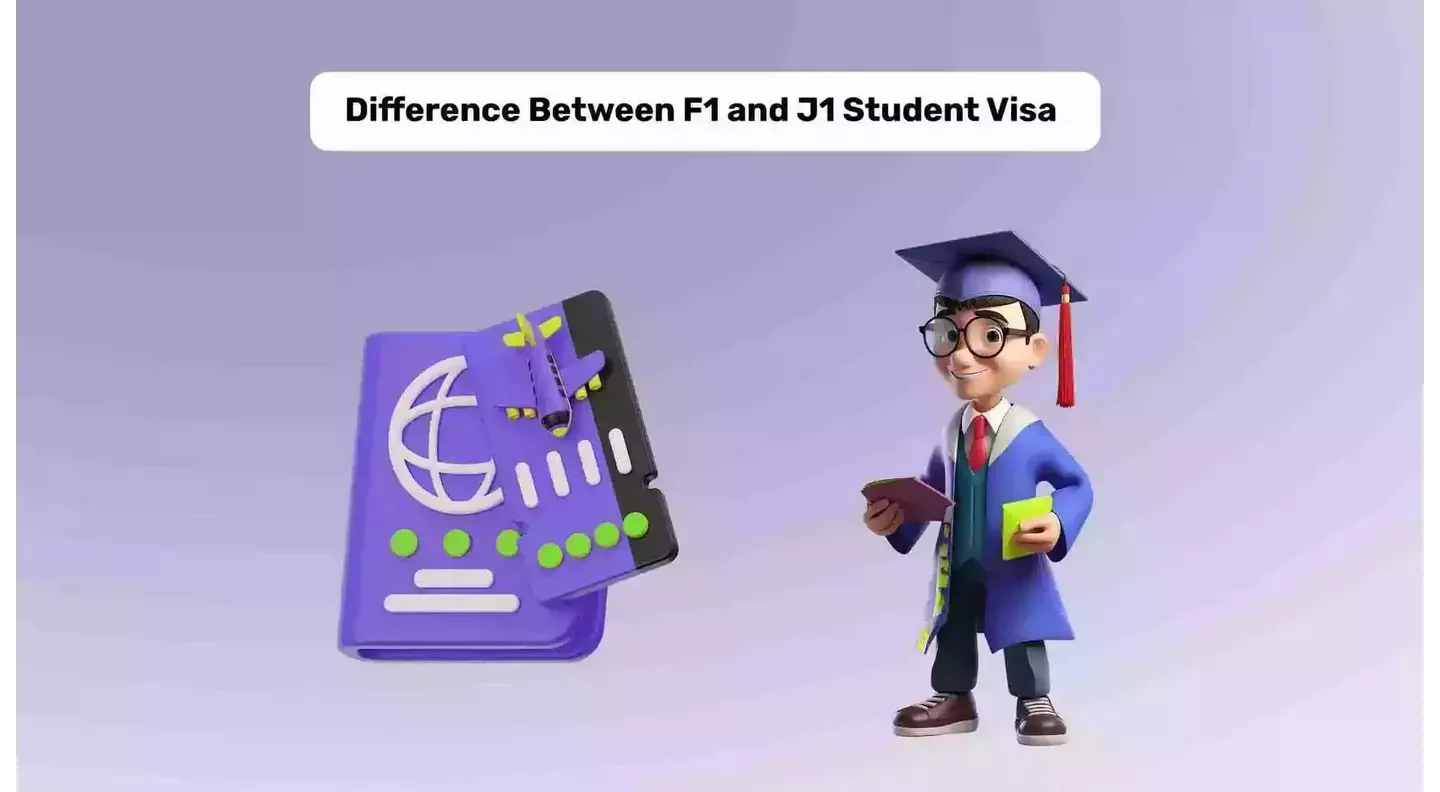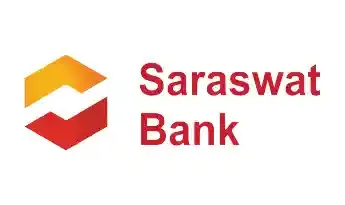Get instant loan offer suitable to your profile !


On this Page:
Explore the differences between F1 and J1 visas, their application processes, eligibility criteria, and benefits. Get expert insights on choosing the right visa for your study.
In 2023, 1.4 lakh Indian students received their student visas excluding 36% of the rejected visa, which is quite high. Many reasons were pointed out in the rejection letter, after lack of funds was wrong visa type. Therefore, here is detailed information about two important US student visas. This will help you outline the F1 visa vs J1 visa.

The three types of student visa for US are F1, J1, and M1. But, the M1 visa is for vocational courses, and in this blog, we will focus on student visas for undergraduate and postgraduate courses.
Most students apply for the F1 student visa, which allows them to stay for a long time to pursue undergraduate or postgraduate courses. This student visa requires 18 hours of classes per week.
Students who participate in the student exchange program need to apply for a J1 student visa. However, many students mistakenly apply for the F1 student visa instead.
Read more about: US Visa Types and their importance.


If you are still unclear about the difference between an F1 and a J1 visa, learn about the difference from the table below:
| Feature | F1 Visa | J1 Visa |
|---|---|---|
|
Purpose |
For academic students pursuing a full-time course of study in the U.S. |
For participants in exchange programs (students, scholars, interns, etc.) |
|
Eligibility |
Must be enrolled in a full-time academic program at a U.S. institution |
Must be accepted into a U.S. government-approved exchange program |
|
Duration |
Typically lasts for the duration of the academic program, plus a 60-day grace period. |
Varies by program type (up to 5 years for students, longer for other categories like scholars). |
|
Work Authorization |
On-campus employment allowed (up to 20 hours/week during school, full-time during breaks). Off-campus employment is allowed with authorization. |
Employment is allowed only if directly related to the exchange program (e.g., internships, research). |
|
Family Members |
Spouses and children can accompany on an F2 visa, but cannot work. |
Spouses and children can accompany them on a J2 visa; J2 visa holders may apply for work authorization in some cases. |
|
Funding Requirement |
Must prove sufficient funds to cover tuition, living expenses, etc. |
Must demonstrate financial support from the sponsor organization (may include stipend or scholarship). |
|
Post-Graduation |
After completion of studies, 12-month Optional Practical Training (OPT) is allowed (may be extended for STEM graduates). |
Must return to the home country for at least 2 years (in some cases) under the 2-year home residency requirement. |
|
Home Residency Requirement |
No requirement to return to your home country after the program ends. |
Some J1 visa holders are subject to a 2-year home residency requirement before applying for other U.S. visas. |
|
Visa Processing |
Application through U.S. embassy/consulate. |
Application through the U.S. embassy/consulate after being accepted into a designated exchange program. |
|
Change of Status |
F1 visa holders may apply for a change of status to another non-immigrant visa or immigrant status. |
J1 holders may apply for a change of status or extend their stay in some cases but may face restrictions due to the home residency requirement. |

If you are applying for the F1 student visa then you can use the following steps to create a roadmap for the F1 visa.
The US student visa's first requirement is an offer letter however, the offer letter should be from a university that is mentioned in the Student and Exchange Visitor Program (SEVP) list.
When you are accepted to the university, you are listed in the Sevis System and you will receive the Certificate of Eligibility for Nonimmigrant (F-1) Student Status-For Academic and Language Students), also called the I-20 form.
You have to pay the SEVIS I-901 fee which is $350 and ensure that all the entered information on the form matches with your other related documents.
After receiving the SEVIS I-901 form (you'll receive a receipt), and then you are eligible to fill up the DS-160 form. The DS-160 is an online F1 visa application form.
After completing the US Visa application, you have to book your visa appointment. Do prepare for the visa interview and reach the appointment center early to avoid any rush.

Student exchange programs are helpful and even help many students in experiencing diverse cultures and teaching methodologies of other countries. This program also helps students receive monetary support from government bodies. Let’s know about the J1 Visa application process:
You must be accepted into an accredited exchange program that is authorized by the U.S. Department of State.
Once you are accepted into a program, the sponsor organization will provide you with a DS-2019 Form (Certificate of Eligibility for Exchange Visitor Status).
After submitting the DS-2019 form, pay the SEVIS fee of $220. This can be done online and safeguard the receipt as you need to submit it during the visa interview.
The DS-160 form is the online application for the J1 Visa USA. It requires personal, academic, and travel information, as well as details about your exchange program.
For the student visa J1, you need to attend a visa interview. Be prepared to discuss your exchange program, your ties to your home country, and your plans after completing your program.

When you are attending the student visa interview, students often cause some blunders which in turn impact them with a rejection.









The rejection rate for student visas is around 36 percent and the common reasons listed for the rejection are the following:





Want an explanation of the rejection reasons? Read US Visa Rejection Reason. Are you confused about the admission? Register for the free 30-minute call and get all your queries resolved.

For a person to qualify for an F1 visa, the academic funding has to necessarily come from personal sources, organizational sources, or a combination of both these sources.
Yes, part-time jobs are allowed while the academic period ensues. Even when it's a break, for instance, a recess in the education year, the student may work full time.
The majority of academic funding here has to flow via outside sources like the university itself, or the government, e.g. in the case of scholarships, exchange programs, etc.
Yes. J1 students can be barred from entering the country of the USA for a whole year in case they study on a J1 visa basis, for more than a time period of 6 months.
J1 visa students who are going to receive academic funding from their own country government or the US government have to establish a “home country physical presence residence requirement” for a minimum of two years in order to be eligible.
The J1 visa USA takes around 8-13 weeks to process, thus, ensure to plan the student visa application accordingly.
You need to be accepted into a U.S. Department of State-approved exchange program and obtain a DS-2019 form from the sponsor.
You need to be accepted into a U.S. academic program and obtain an I-20 form from the institution.
Check Your Education Loan Eligibility

Ask from a community of 10K+ peers, alumni and experts
Trending Blogs
Similar Blogs

Network with a community of curious students, just like you
Join our community to make connections, find answers and future roommates.. Join our CommunityCountry-Wise Loans
Best Lenders for Education Loan

ICICI Bank

Axis Bank

Union Bank

Prodigy

Auxilo

Credila

IDFC

InCred

MPower

Avanse

SBI

BOB

Poonawalla

Saraswat